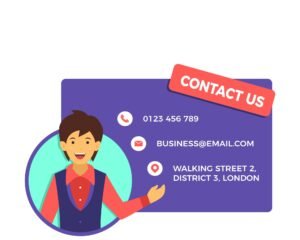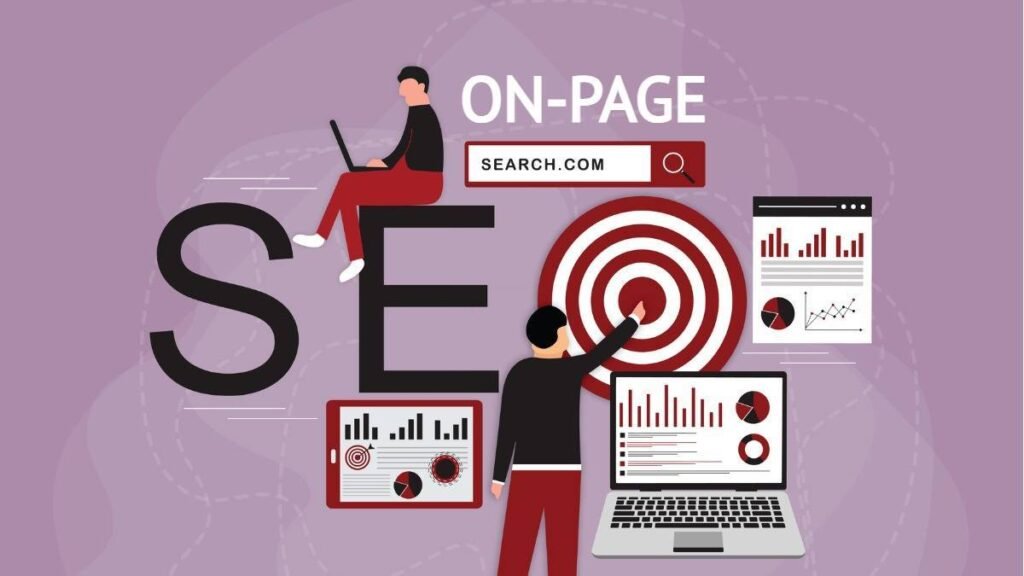Web Design in 2025 : 10 Best Components of Good Web Design

Introduction
It’s not just about looking good; it’s about providing an exceptional user experience that drives engagement, conversions, and enhances your brand’s presence. Whether you’re a business owner or a web developer, understanding the key aspects of web design will help you create a website that stands out and delivers value in 2025.
This article explores the 10 essential components of good web design that every website should embrace in 2025. Let’s dive into the world of web design and discover how to make your site a powerful tool for your business.
1. Effective Calls to Action (CTA) – Inspire Visitors to Act
One of the key elements of web design is a clear Call to Action (CTA). A CTA is essential in guiding your visitors to take specific actions. Whether it’s subscribing to a newsletter, purchasing a product, or contacting your team, a well-placed CTA makes the difference between visitors bouncing off your site or engaging with your business.
In 2025, CTAs must be strategically placed, highly visible, and offer clear instructions. Visitors should instantly know what to do next, and the design should lead them naturally to that action.
Key Tips for Effective CTAs:
- Use action-driven language: Phrases like “Get Started Now” or “Subscribe Today” motivate users to act.
- Ensure visibility: Your CTA should contrast with the surrounding design for easy visibility.
- Position strategically: Place CTAs in key spots such as at the end of blog posts, in navigation menus, or within product descriptions.
2. About Us Section – Share Your Story and Build Trust
The About Us section of your website is a pivotal aspect of web design. This section tells your visitors who you are, what you stand for, and why they should choose you over competitors. It humanizes your brand and fosters trust, which is crucial for building lasting relationships with customers.
In 2025, visitors value transparency and authenticity. Your “About Us” page should make it clear who you are, what you stand for, and why users should care.
3. Accessible Contact Information – Foster Easy Communication

A website is incomplete without contact information that is easy to find and accessible. Whether visitors are looking to get in touch with you via email, phone, or live chat, your web design should make it effortless for them to reach out.
In 2025, visitors expect immediate ways to connect, such as live chat or easy-to-navigate forms. The quicker and easier it is for users to reach out, the better.
4. Simple and Intuitive Navigation – Enhance User Experience
Navigation plays a crucial role in web design. A website with confusing or cluttered navigation will lead to frustration and drive users away. In 2025, intuitive and easy-to-use navigation is more important than ever.
In 2025, visitors expect seamless navigation that is easy to use and logically structured. Clear, concise menu options and a well-organized layout are key to making your website user-friendly.
Navigation Best Practices:
- Keep it simple: Focus on key categories in your navigation menu.
- Sticky menus: Make sure your navigation stays visible as users scroll.
- Clear labelling: Use straightforward terms to make navigation intuitive.
5. Mobile-Optimized Design – Deliver a Seamless Experience Across All Devices

With mobile traffic continuing to rise, responsive web design is a must. Websites that aren’t optimized for mobile devices risk losing significant traffic and conversions. A mobile-optimized website automatically adjusts its layout to deliver an exceptional user experience, regardless of screen size.
Having a responsive design ensures that your website performs optimally across smartphones, tablets, and desktops. This approach not only improves user experience but also contributes to better SEO rankings.
6. Fast-Loading Pages – Keep Visitors Engaged
The speed of your website is one of the most critical aspects of web design. A slow-loading website not only frustrates users but can also result in a high bounce rate. A website that loads within 2 seconds or less tends to have better engagement and higher conversion rates.
Optimizing your website’s load time is a vital part of modern web development. Ensure that your images are compressed, unnecessary code is removed, and browser caching is utilized for faster page loading.
Speed Optimization Tips:
- Compress images: Reduce image file sizes without sacrificing quality.
- Minimize code: Eliminate unnecessary JavaScript and CSS to improve performance.
- Use caching: Allow browsers to store static resources for quicker loading times.
7. Utilize White Space – Create an Organized and Clean Design
The strategic use of white space (also known as negative space) is another critical element of modern web design. While it may seem like an unnecessary empty space, it actually serves to enhance content readability, direct attention to important elements, and reduce clutter.
In 2025, minimalist design that utilizes ample white space will continue to be a key trend. It allows your website to look clean, organized, and professional.
8. Consistency in Branding – Establish a Strong Identity

Consistent branding across your website helps reinforce your business identity and builds trust with visitors. Consistency in color schemes, typography, and visual elements is crucial in creating a cohesive web design that resonates with users and strengthens brand recognition.
In 2025, users expect a seamless experience that reflects your brand’s identity. Consistent branding ensures that visitors feel connected to your business and can easily identify your website.
9. Compelling Visual Design – Make a Lasting Impression
Visual elements are an integral part of web design. The imagery, typography, and color schemes you choose must work together to create a visually stunning experience for your users. High-quality visuals capture attention, convey your message, and provide a lasting impression.
Using high-quality images, engaging visuals, and interactive elements can help captivate visitors and make them want to stay longer on your site.
Visual Design Best Practices:
- Use high-quality images: Select visuals that are relevant and align with your content.
- Keep the style consistent: Maintain a cohesive design style to ensure unity.
- Interactive elements: Add animations or hover effects to keep users engaged.
10. Relevant and Valuable Content – Keep Visitors Coming Back
No web design is complete without high-quality, relevant content. Your website must provide valuable, well-crafted content that speaks directly to your target audience’s needs. Content is the heart of your site—whether its blog posts, product descriptions, or educational resources, make sure your content is engaging and solves problems.
By providing valuable information, you keep users engaged and improve your chances of converting them into customers. Regularly updated content also helps boost SEO.
Content Best Practices:
- Write compelling stories: Use storytelling to make your content more engaging.
- Solve user problems: Focus on answering questions and addressing pain points.
- Update regularly: Fresh, relevant content shows your site is active and valuable.
Conclusion
By focusing on these 10 essential elements of web design, you can create a website that offers a stellar user experience, drives engagement, and boosts conversions. Whether it’s optimizing for mobile, improving page speed, or using effective CTAs, these strategies will help you stay ahead in 2025.
If you’re looking for professional assistance to enhance your website’s design and performance, Active Growth Tech is here to help. From responsive design to web development, we offer tailored solutions to meet your needs and improve your web design strategy.
Frequently Asked Questions (FAQs)
1. Why is web design so important in 2025?
Web design affects user experience, SEO rankings, and conversion rates. An effective web design leads to better engagement, higher retention, and improved trust with your audience.
2. What are the most important aspects of a website’s design?
The most important elements of web design include clear CTAs, responsive design, fast load times, intuitive navigation, and engaging, relevant content.
3. How can I ensure my website is responsive?
Ensure your website adapts to various screen sizes and devices, offering a seamless experience whether on mobile phones, tablets, or desktops.
4. How can I improve my website’s speed?
Optimize images, reduce unnecessary code, and enable browser caching to increase the speed of your website and enhance the user experience.
5. How do I increase conversions on my website?
Effective CTAs, user-friendly navigation, mobile optimization, and valuable content are key factors in improving website conversions.











